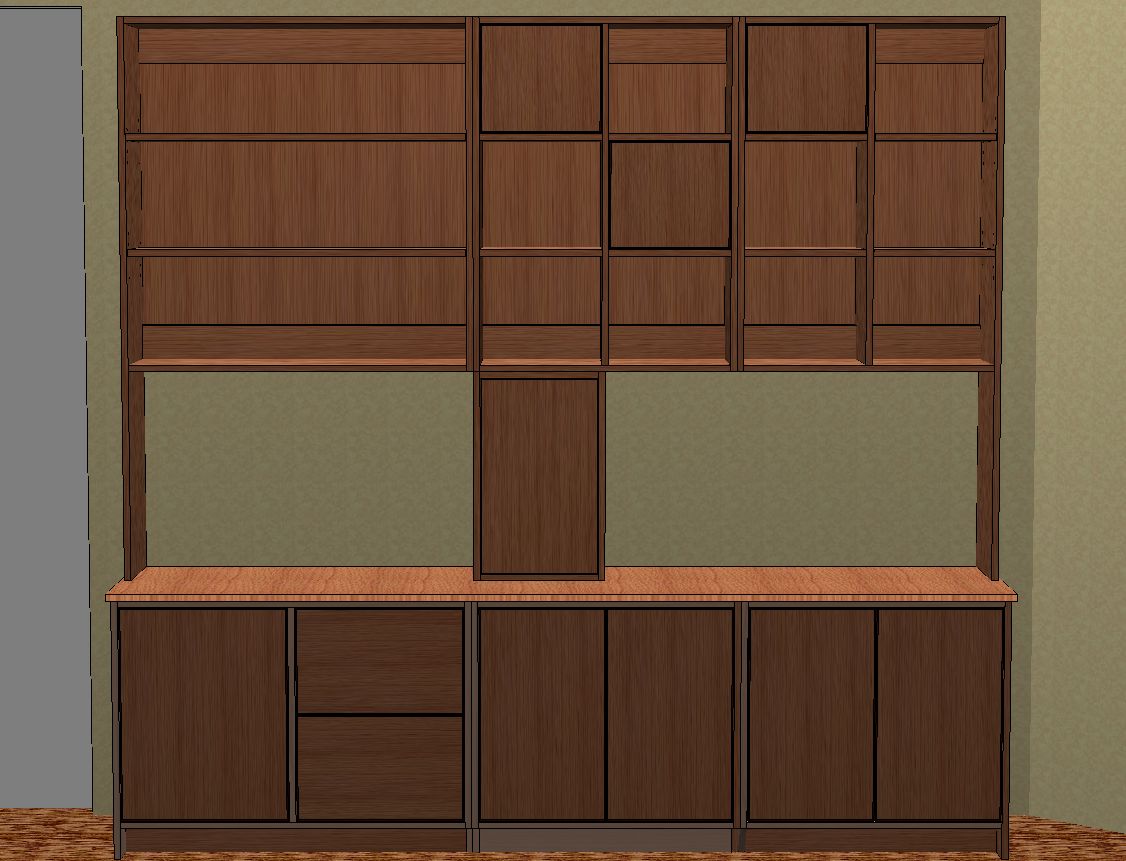Question
I have never outsourced cabinet carcass parts, but recently considered whether or not it was cost effective. Is it typical that any shops that provide these panels would use CNC equipment, and would therefore need drawings provided in order to get panels made?
What I am wondering is, if I provide a parts list without drawings for pre-finished maple plywood panels, with or without rabbets or dados, and edgebanding, is it cost effective to have these cut at a shop?
If I only can provide a list, or hand drawn sketch, then does the panel shop have to have someone draw these parts in Acad, for instance, and then input those into a machine? If so, does that end up costing more, making the process less cost effective?
I am a one man shop building kitchens and other various built-ins. I have a SSC panel saw, which works well, but I am always looking for a better way.
Forum Responses
(Cabinetmaking Forum)
From contributor G:
It works from the outside in, not from the inside out. Usually. By that, I mean you provide your cutter with your job file, and he simply sends it straight to the machine. Your job file is your whole project of custom cabinets, with all their features, sizes, specs, hardware holes, fastening holes, etc., all embedded within.
Software processes the file and produces CNC-readable optimized cut lists called "nesting diagrams," which is a way of saying the parts are laid out randomly on your whole run of 48x96 sheets to optimize material usage. Think "cut list pictures." For you to do your work with paper, pencil, and calculator, then send a parts list to a CNC cutter, means the cutter needs to manually enter the whole thing into some kind of program that can load it up to his machine. Errors can happen in transcription, not to mention the cost of doing the transcription.
There are plenty of shops all over the place that are using software like what True32 sells, and Thermwood gives away for free, that do all their cutting without a CNC. But once you have seen what a CNC can do in knocking out a 25 or 35-sheet job using blind dado joinery, full of all the hardware and shelf holes, etc., you'll want to see what jobbing out that part of a cab project can do for you. It might free you up to be able to sell three or four times the job volume you do right now. Who knows?
This has been my experience. Just lately I have found some excellent sources of drawers, tops, doors and pretty much anything I need at excellent prices. There were some bad sources of woodwork along the way as well, though. $1500 for 10 scooped out chair seats by a CNC shop was one expensive lesson. One fellow spoke poor English and got the details wrong on a credenza. I was able to fix it in a few hours, though. Went back to him and suddenly his prices went up dramatically, so goodbye.
By the way, I'm just part of a chain. The furniture companies are using me to supply them with their casework and furniture. Just this week a medium-sized Canadian furniture maker has asked me to supply them with new designs. This is where the internet presence is important. Their rep came and checked me and my humble little shop out last week. The website was very important as well. They liked what they saw.
As far as cost effective to outsource, I have an example. I had one guy who wanted to do some closets. I figured it would take about 3 days to machine the parts on the router, but take at least 3 weeks to cut and drill all the parts by hand. The time on the router is certainly much more expensive, but when you consider the cost of making these parts manually, it becomes much more attractive.
Here's a good analogy. While I was filling my tank in my new diesel truck, bemoaning the fact that I was paying way more for diesel than premium gas, I decided to do some math. With diesel being nearly .40 more than unleaded, I wondered if I was saving any money because the new truck got better mileage. I realized that in the 3 1/2 months of driving this new truck, I saved $1,200 in fuel cost. Yes, diesel was more expensive, but the increase in mpg was enough to provide a significant savings.
I found the same to be true with machining parts on a router. The parts are consistently better quality, and machining styles can improve the fit and assembly times over manual processing. The same is true for edgebanding. You get a much better product for less time and money.
I would suggest that you focus on the marketing and service as you build your company. Consider your outsourcing as additional employees in an off-site location. As you are freed up to offer exceptional product and service, your business and revenue should grow. At that point, you can consider whether to bring this in-house or continue to use someone else to process your parts.
